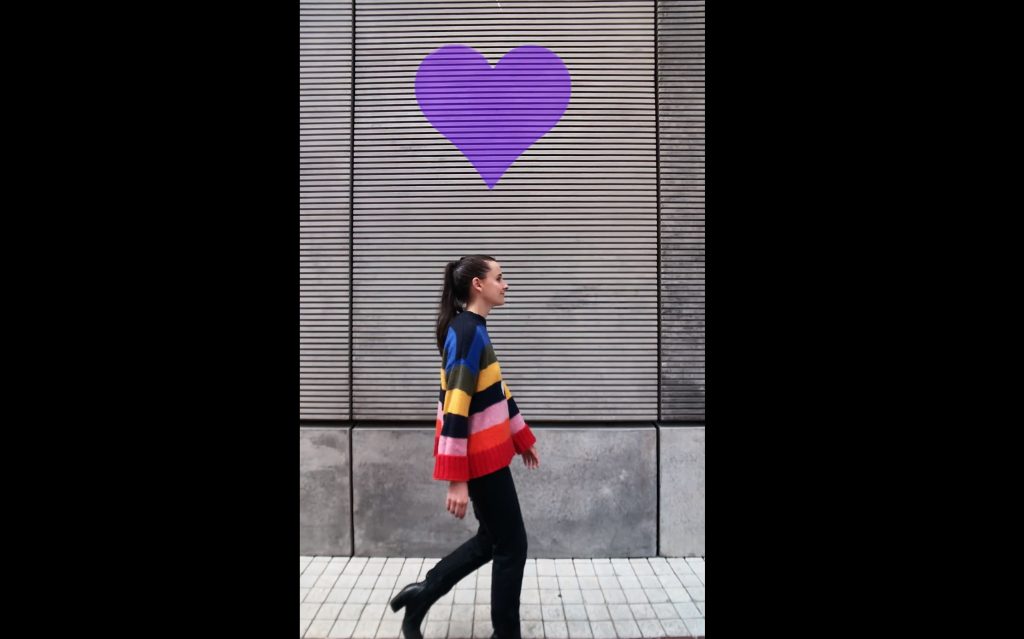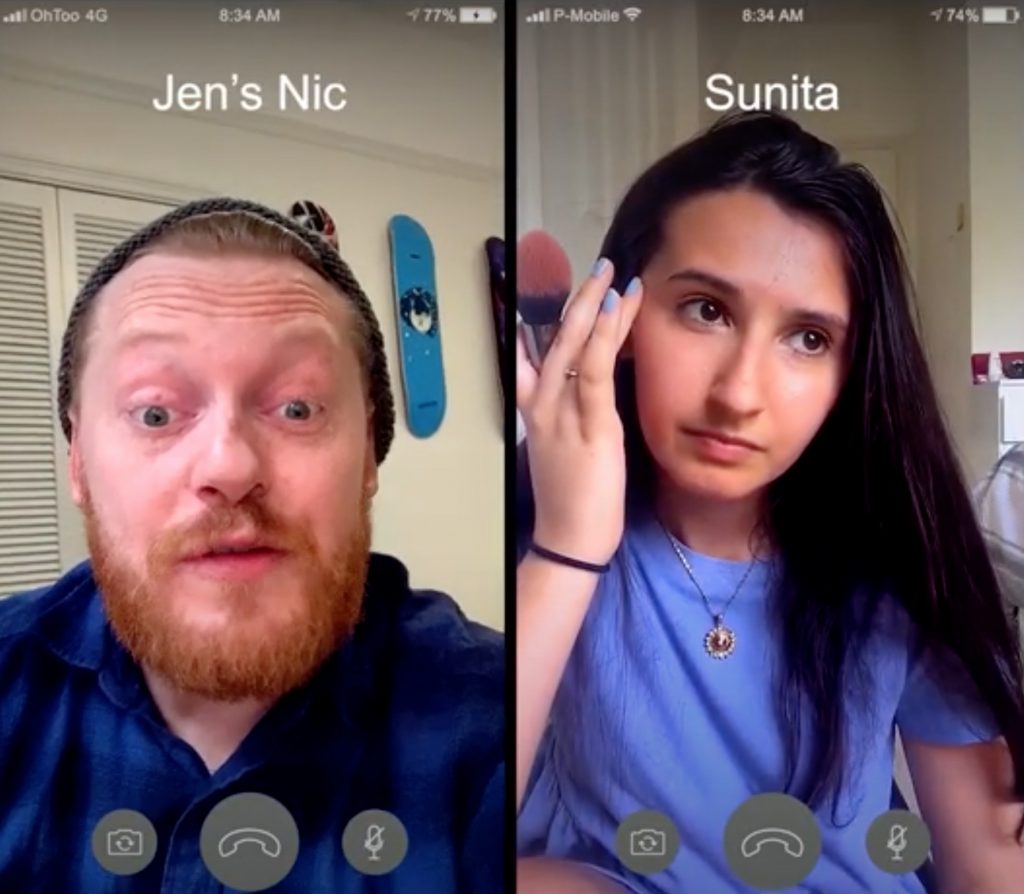Topeka-based Bryan Daugharthy could be the poster guy for the solo production. For his latest project “Black Man Soul,” he did all the key tasks such as location scouting, cinematography, and editing. Nevertheless, he values collaborative filmmaking. That is not a contradiction as you’ll learn in the interview following the movie.
Interview with Bryan Daugharthy
MobileMovieMaking: What motivated you to become a filmmaker?
Daugharthy: I love story telling and have always been interested in the collaborative aspect of filmmaking. I never really wanted to direct, I always was more intrigued with editing. The thought of crafting a story in post with the director and making his vision come to life really turned me on. To be honest I thought that’s where I would spend most of my career.
MobileMovieMaking: So what led you to becoming a director?
Daugharthy: Because I’m isolated from Kansas City, which is where most of the major film work is done, if I wanted to make movies, I realized I had to take on that role.
MobileMovieMaking: How did you develop your skills?
Daugharthy: I learned through trial and error and just watching how people work when I was on set. That is what drew me to mobile film making. I didn’t have to have a big expensive camera and sound gear or a huge crew. “Black Man Soul” was shot in a few hours with just me behind the camera. The nice thing about music videos is you don’t have to worry about an audio mix because you already have a mastered song. I’ve got plenty of attempts in the can that I look at now and cringe at. But the beautiful thing about this kind of work is that the longer you do it the better you get.
MobileMovieMaking: Are there any filmmakers who influenced you?
Daugharthy: Yeah, many who came out of Sundance 94, for example, Kevin Smith. His “Clerks” showed me that it doesn’t take millions of dollars to make a cult hit. If you have good story, people will watch. Even how Kevin is making and self distributing is a pathway that all young filmmakers should study. With the advent of streaming services, people have had to rethink the system as a whole and he has done it to perfection.
MobileMovieMaking: Anyone else?
Daugharthy: Quentin Tarantino. His “Reservoir Dogs” takes place mostly in one location because that is what he could afford and had at his disposal at the time. It showed me that being resourceful is so important. That’s a lesson I also learned from Sean Baker, the director who got me into mobile filmmaking. I love the middle of “Tangerine” because of the way that the iPhone 5 caught the sun setting and the warm tones.
MobileMovieMaking: Moving on to “Black Man Soul,” how did you meet JQ?
Daugharthy: He and I met through a mutual friend here in Topeka. When JQ sent me the song to listen to, I put some ear buds in and put it on repeat. The subject matter was super heavy with everything going on in our world right now. I decided that I didn’t want to make a super polished video. To best serve the lyrical content, the video needed to be gritty and rough. So the idea came to shoot it in some alleys around Topeka, and at the barber shop.
MobileMovieMaking: Which brings up the job of location scouting.
Daugharthy: I’ve found many places through street photography, which has been something that I’ve been doing during quarantine. I would load up my canon AE-1 and go wander the streets of Topeka by myself and that’s what happened with finding these places. I would tell young creatives to go and explore the forgotten parts of your town because that is when you find that one place that would fit perfect into the sense of your film or music video. Having something as small as your phone and an app like FilmicPro to help make that happen is fun.
MobileMovieMaking: Why did you decide to shoot the movie using a mobile device?
Daugharthy: That’s what I had at my disposal at the time. This music video was shot on my personal phone— the one I use every day. I just turned the airplane mode on and shot, easy as that.
MobileMovieMaking: Any disadvantages in using a smartphone?
Daugharthy: The iPhones I’ve used are temperamental regarding weather. They overheat in hot weather and don’t fair much better when it’s cold.
MobileMovieMaking: How did you plan the shoot?
Daugharthy: There really wasn’t any planning. I just said, “Hey, I’ve got a couple of spots that I think would be pretty dope.” Credit to JQ. He trusted that I understood the look he was going for and said, “OK, let’s do it.”
MobileMovieMaking: What gear did you use for the shoot?
Daugharthy: My gear list was pretty simple: my iPhone 11 Pro max; FiLMiC Pro double take, which I used to get both the wide and close up angles; Beastgrip lens adapter and rig system; and a PNY Duo Link with the thunderbolt connection on it to transfer everything to my laptop.
MobileMovieMaking: And for the post?
Daugharthy: I’ve got a late 2017 MacBook Pro using the free version of DaVinci Resolve and Clipgrab for the YouTube clips, which is also free. When I found out DaVinci started offering their stripped down free version of Resolve I hopped on it and have been using it ever since. It has also allowed me to learn color correction. As an indie film creator you have to be resourceful about finding free software. It may not be an Adobe or some other big name, but who cares if it serves your purpose
MobileMovieMaking: What about your method of directing the performers?
Daugharthy: I try and foster collaboration with the artist both on set and in the edit bay. For example the shot of JQ on the steps with his crew in front of him was JQ’s idea. I wanted him on the ground and his crew above him standing very militant. We shot it both ways, and in the end JQ was right and that made the cut. I really like when the artist gets involved because it creates a more exciting vibe. That happened when we added the shots of the older man who is JQ’s grandfather. He went to school where Brown v. Board of Education happened. JQ told me how he wanted me to cut it into the video. When I showed him, this big smile came across his face and I knew I had completed the vision and really that’s what makes me happy.That’s the other thing we tried to do was add some history to the video: clips of MLK’s Selma march, the peaceful protest we had here in our home town of Topeka Kansas, President Obama and his family walking across the Selma Bridge fifty years later, and the #BLM that we put as a lower third throughout the video.
MobileMovieMaking: Could you talk about your approach to editing the movie?
Daugharthy: This is another place where collaboration with the artist comes in. After I make a first pass at the video and get it loosely constructed, I ask the artist to come in and watch it with me. Then I ask if there any shots that they can’t live without. In this case JQ really wanted the barber shop to be in it, so we picked clips that we liked and started to lay them in until we had what we were looking for. I will make one more pass making sure there aren’t any jump cuts or harsh transitions. Next I color correct. With “Black Man Soul” I used the effects that were included with the free version of DaVinci Resolve. When JQ got the mastered song back, I laid it in.
MobileMovieMaking: What do you think about the finished video?
Daugharthy: I feel great about it, but there are some shots that I’d like to have back. This is the first time I used double take in a video like this and with some close-ups JQ falls out frame.
MobileMovieMaking: What advice would you give to someone who is just starting out making movies?
Daughtarthy: Think outside the box and be original. Reach out to local artists in your town and see if you could make something for them. The only way to get better is to practice, and you can’t practice if you’re too scared to ask for a chance. Dont be discouraged by the word “no.” Keep fighting and pushing. I’ve got a three-ring binder full of “no’s” but it only took one “yes” and look at me chatting with MobileMovieMaking. Self-doubt may creep into your head because as creatives that’s what happens. But failure isn’t failure if you learn something. Build on your failures and one day you could make the film or video of your generation!
MobileMovieMaking: How can people learn more about your work?
Daugharthy: They can follow me on Twitter and Instagram.
# # #
The editors of MobileMovieMaking have chosen “Black Man Soul” as the Mobile Movie of the Week.



 Previous post
Previous post
 Next post
Next post






Sue per proud of this.
This is a powerful video. Very well done.
Very creative and love the history put in the video! Great job!!
Excellent video. crazy how well it turned out with so little equipment. Way to go. Good interview also.
This video and song are amazing and so powerful!
This is the finest piece of filmmaking the world has yet seen.
Navigating the limited resources of a small city to produce a well edited piece
Such a great piece of film making. Daugharthy is a mobilemoviemaking mastermind.
Really great work, impressive
Great song, video and article!
Great video!
Thats Dope asf!!!.. Caught me off guard. Its crazy how he did that with an iPhone. Keep it coming!!!
Song is great! And the clips are edited in perfectly!
Great video!
Powerful and historical